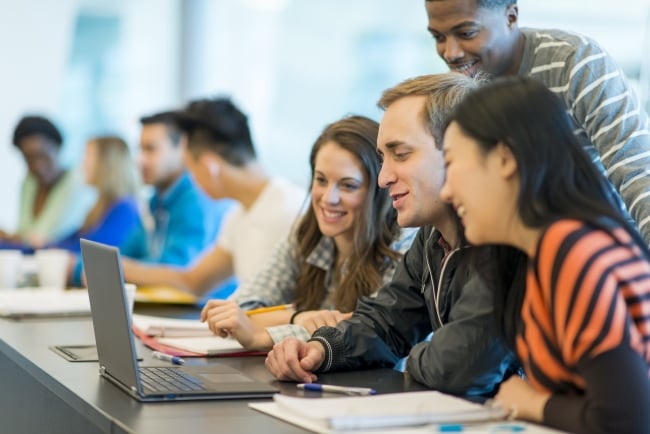You have /5 articles left.
Sign up for a free account or log in.

A flipped classroom model allows professors to engage with students on learned materials and incorporate active learning pedagogies.
FatCamera/iStock/Getty Images Plus
Teaching style and content delivery are key components of a student’s academic experience, making good teaching a critical factor in student success.
A spring 2023 Student Voice survey from Inside Higher Ed and College Pulse found more than half of students have struggled in class due to a teaching style that didn’t work for them. Among students who reported this as a problem, two-thirds say they want professors to vary their teaching style more.
Using a flipped classroom model does just that, prioritizing active learning activities and peer engagement.
How it works: Rather than spending class time on new content, a flipped classroom requires students to engage with new material prior to the class period.
The flipped classroom allows professors to complete active learning activities during course time, including case studies, debates, discussions, group projects, problem-solving, presentations or educational games, according to the University of Florida’s Center for Teaching Excellence.
Students can explore course content by watching a prerecorded lecture, engaging with a digital module or reading material or complete a preparatory assignment, according to the University of California, Berkeley, Center for Teaching and Learning.
Flipped classrooms are not a new idea, having long been a practice in certain disciplines, but technology has made it easier to access and create educational materials, according to Harvard University’s Derek Bok Center for Teaching and Learning. “This approach assumes that there is no difference between a student listening to a lecture individually and with other students in class,” according to the center’s website.
The perks: Flipping the classroom allows professors to provide individualized help during class time. The model also creates engagement opportunities between students as they grapple with ideas.
Providing lecture materials outside of class allows students to set their own pace, rewatching or rereading as needed.
UC Berkeley teaching experts also argue that classes are less likely to be impacted by interruptions, whether that’s tech issues or life circumstances, that could impact a synchronous course session.
DIY: For a professor looking to lean into the flipped classroom model, experts offer the following tips.
- Avoid busy work. If a professor is going to clear class time of instructional material, there should be other engaging active learning strategies filling its space.
- Don’t flip flippantly. Not every discipline benefits in the same way from a flipped course model. Professors should be thoughtful in how the instruction model promotes learning outcomes before flipping their class.
- Teach learning techniques. If students are going to learn on their own time, professors should provide some best practices on how to watch a video lecture, taking notes for the discipline or how to reach out if they need additional help with the material.
- Identify incentives. To ensure students are coming to class prepared, professors can make incentivizing assignments like a quiz, group project or small group discussion. Some students may be resistant to the flipped model, having traditionally been fed material in class rather than prior, but professors can share how this improves the learning experience to get their buy-in as well.
Do you have an academic success tip that might help others encourage student success? Tell us about it.








